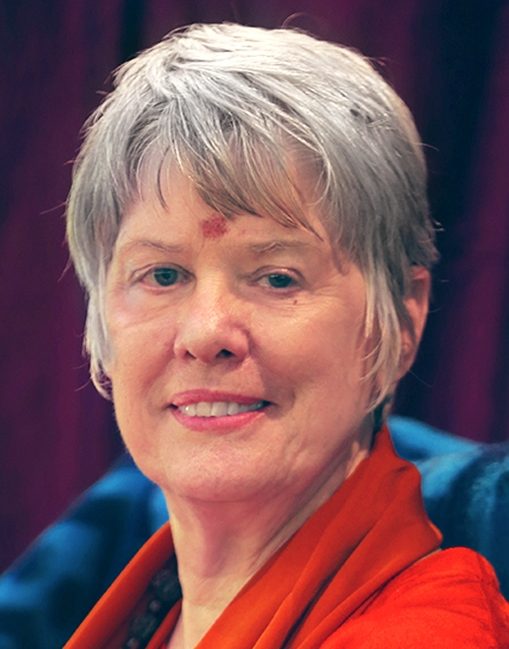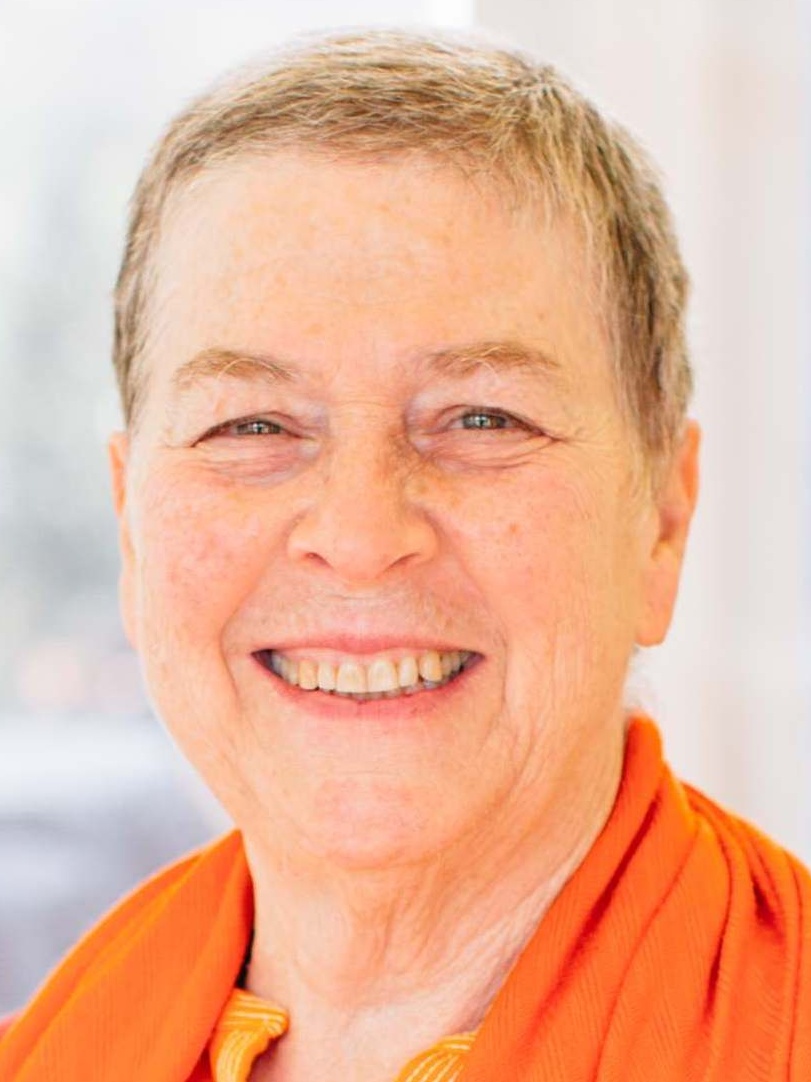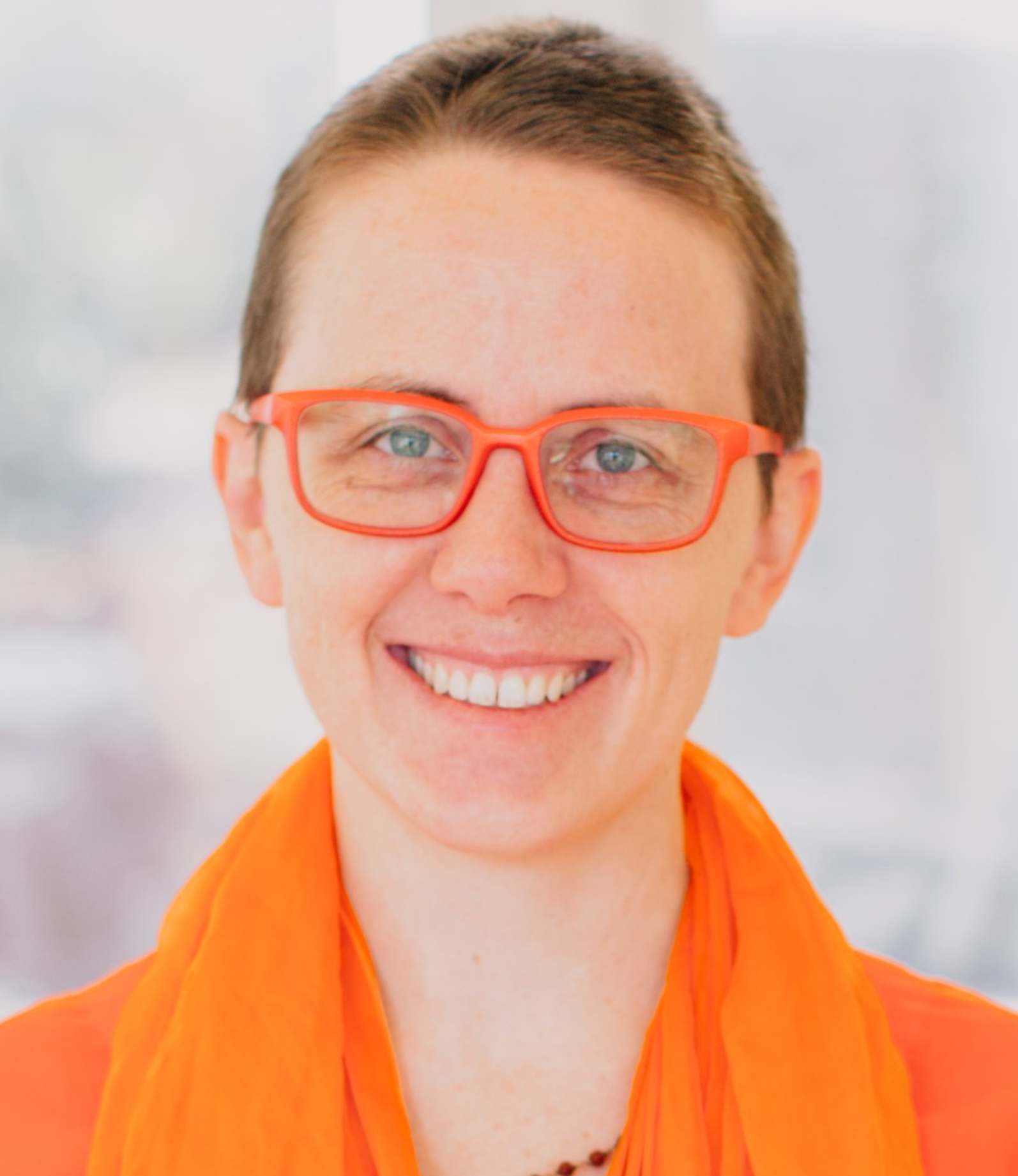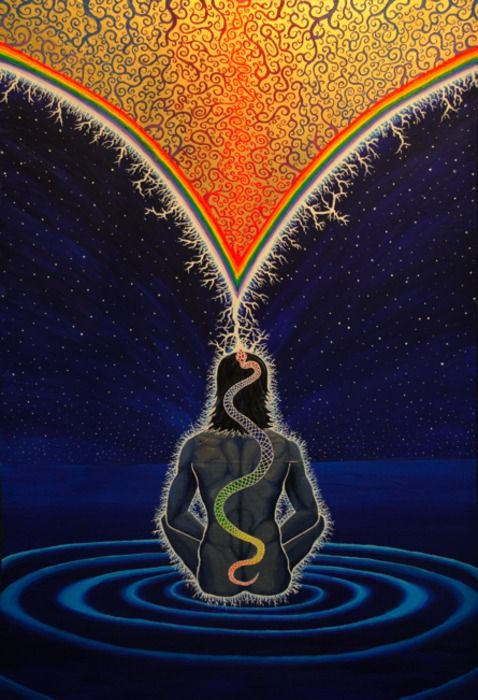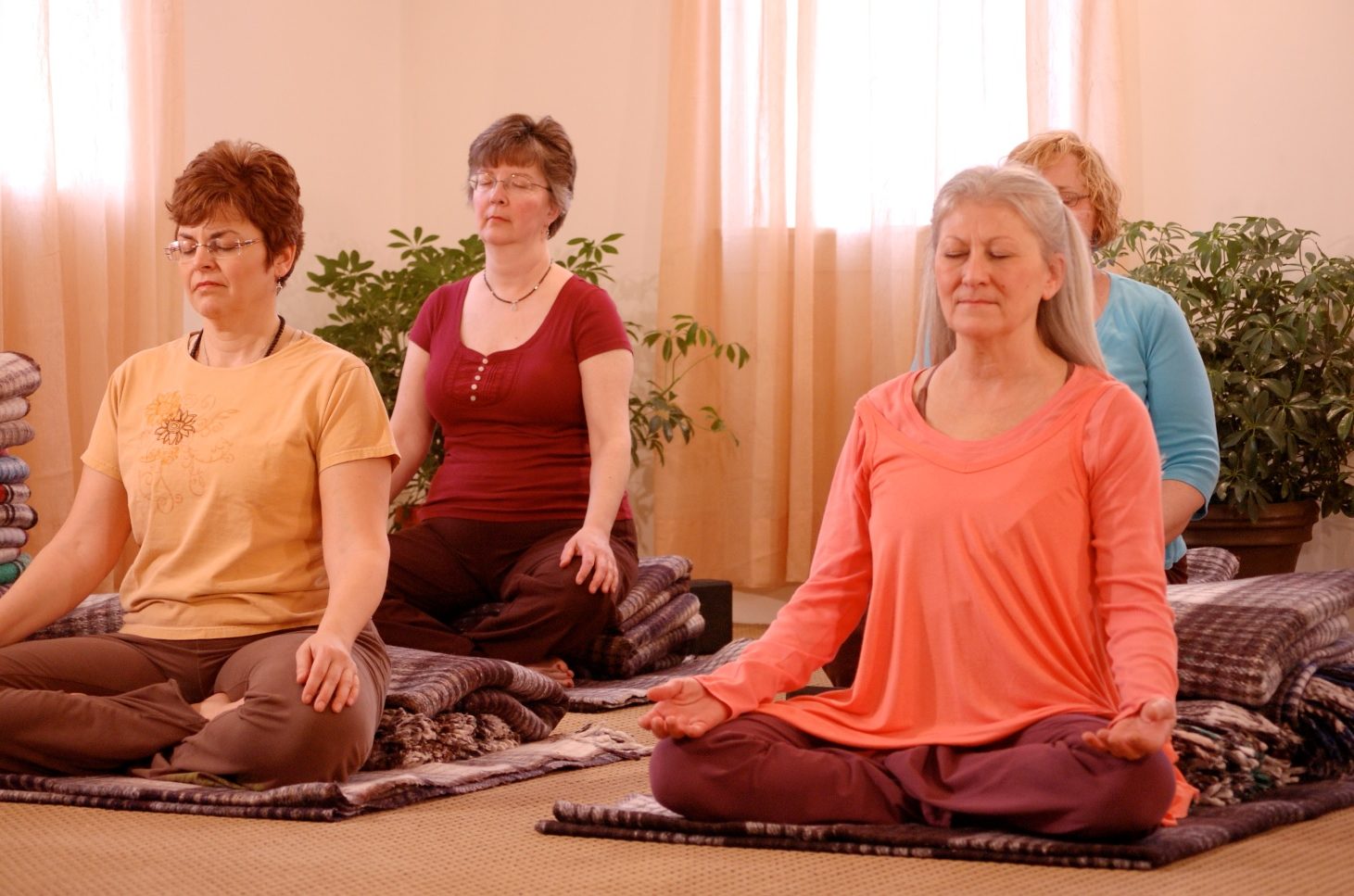 By Nirooshitha Sethuram
By Nirooshitha Sethuram
Jarasandha was a very powerful king who expanded the Magadha kingdom. Alliances with other kings made him become a mighty king of that area. Both his daughters married Kamsa of Mathura, but they returned to him when Krishna killed Kamsa. Jarasandha was very angry and decided to kill Krishna.
Jarasandha took his massive army to war with Krishna, arriving at the gates of Mathura. Krishna debated whether to kill Jarasandha or to teach him a lesson by destroying his army. While Krishna was contemplating, two beautiful chariots appeared from the skies, full of weapons and all that was needed for a battle.
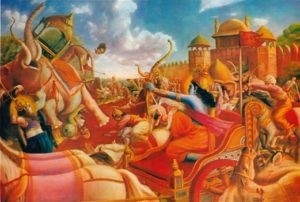 Krishna and Balarama jumped in the chariots and went outside the city to battle with Jarasandha. Using his mighty bow called Saranga, Krishna destroyed Jarasandha’s army in no time. But he spared Jarasandha’s life. When Balarama leaped like a lion to kill Jarasandha, Krishna calmed Balarama, saying that the time for Jarasandha’s end hadn’t yet come. Jarasandha, his pride having been wounded, decided to give up his kingdom and become a renunciant in the forest.
Krishna and Balarama jumped in the chariots and went outside the city to battle with Jarasandha. Using his mighty bow called Saranga, Krishna destroyed Jarasandha’s army in no time. But he spared Jarasandha’s life. When Balarama leaped like a lion to kill Jarasandha, Krishna calmed Balarama, saying that the time for Jarasandha’s end hadn’t yet come. Jarasandha, his pride having been wounded, decided to give up his kingdom and become a renunciant in the forest.
He was consoled by other Kings not to take such a drastic decision. They reminded him that victory and defeat should be treated equally and accepted by true heroes. Many Kings who previously had alliances with Kamsa joined hands with Jarasandha. Jarasandha, along with other Kings, attacked Mathura seventeen times, failing bitterly — each time worse than before. Under the leadership of Krishna, the people of Mathura bravely repulsed each attack.
Unable to defeat Krishna, Jarasandha made an alliance with Kalayavana, a Yavana (Greek) king who had gotten a boon from Lord Brahma that he would be undefeated on any battlefield. Kalayavana, being a fierce worrier, was seeking a fight with a worthy opponent and thought Krishna would be the best fit.
When Krishna heard about Jarasandha’s new alliance, he knew the combined armies would destroy Mathura. Already, due to the many battles, the daily life of Mathura was disrupted. Commerce and trade were ruined. Krishna realized the kingdom had to face many dangers if they stayed there.
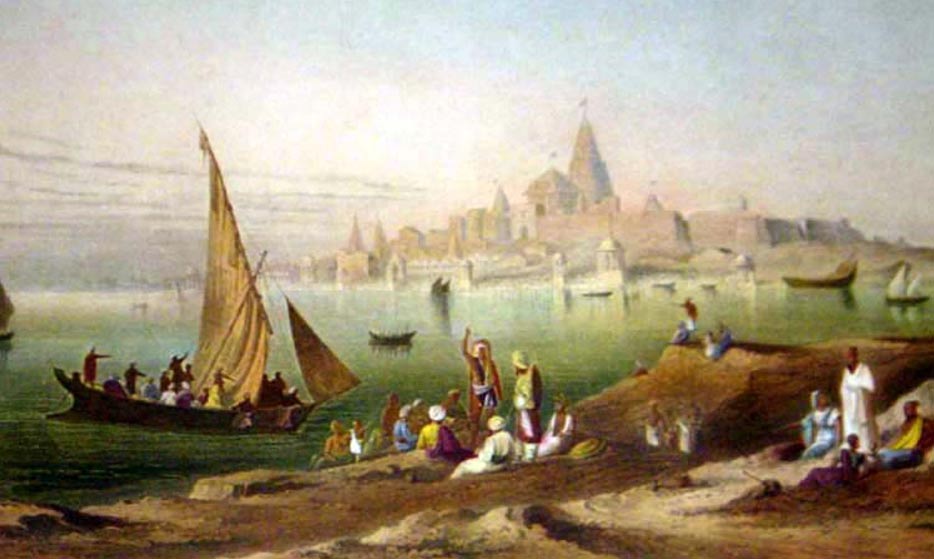 He summoned Vishvakarma, the divine architect, requesting him to build a city which would be hard for his enemies to reach. For this reason, Vishvakarma decided to build this city in the middle of the sea. Thus, he wanted some land from the sea, but if only Varuna, the Lord of the Sea) would allow.
He summoned Vishvakarma, the divine architect, requesting him to build a city which would be hard for his enemies to reach. For this reason, Vishvakarma decided to build this city in the middle of the sea. Thus, he wanted some land from the sea, but if only Varuna, the Lord of the Sea) would allow.
Krishna called upon Varuna, who gracefully gave the land. Vishvakarma built the magnificent Dvaraka, a city like none before. It was a city so golden that it cast its radiance on the ocean for miles and miles around. First the citizens of Mathura were moved safely to Dvaraka. Then Krishna, together with Balarama, started strategizing the war with Kalayavana and Jarasandha. They decided they needed a lustrous plan to kill Kalayavana, since it was not possible to kill him on the battlefield due to his boon.
Krishna decided to meet Kalayavana without any weapons or chariot. When Krishna walked towards Kalayavana, without anything to protect himself, Kalayavana was surprised and puzzled all at the same time. Kalayavana had heard so much about Krishna from Sage Narada, so what he was seeing matched everything he’d heard, but he was taken by Krishna’s actions. According to the principles of war, Kalayavana decided to challenge Krishna for a duel without weapons, making things easy for the brothers.
Krishna strategically fled the battlefield and lured Kalayavana into a cave. This cave is where Muchukunda, the great king of Ishvakhu Dynasty, was in deep sleep for thousands of years after helping devas in epic wars with the asuras for many many years. The devas granted this undisturbed sleep as a boon to Muchukunda for his service to them. Muchukunda had also requested Devas that anyone who would disturb his sleep would get burnt to ashes immediately. After entering the cave, knowing this boon, Krishna covered Muchukunda with his shawl. Then Krishna hid in the cave.
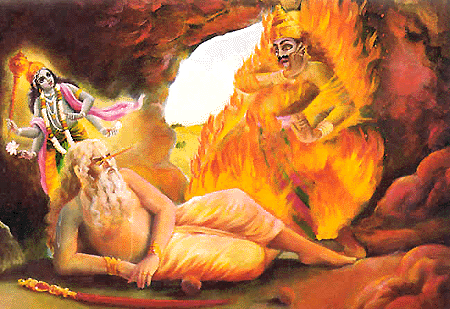 Chasing Krishna, determined to kill him, Kalayavana entered the cave and found someone sleeping there. As Krishna’s shawl was covering the sleeper, Kalayavana assumed it was Krishna who made him chase all the way to the cave and now was pretending to be sleeping. He got really mad at Krishna and kicked Muchukunda, assuming him to be Krishna, thus disturbing Muchukunda’s sleep. Muchukunda woke up from his sleep and looked at Kalayavana, thus burning him to ashes.
Chasing Krishna, determined to kill him, Kalayavana entered the cave and found someone sleeping there. As Krishna’s shawl was covering the sleeper, Kalayavana assumed it was Krishna who made him chase all the way to the cave and now was pretending to be sleeping. He got really mad at Krishna and kicked Muchukunda, assuming him to be Krishna, thus disturbing Muchukunda’s sleep. Muchukunda woke up from his sleep and looked at Kalayavana, thus burning him to ashes.
Krishna appeared in front of Muchukunda, who was delighted to see Krishna there, who was none other than Lord Vishnu. Krishna advised him to perform tapas in order to cleanse the accumulated sins and attain moksha (liberation). After meeting the Lord, Muchukunda left the cave, going to Badrikashram to do penance to achieve liberation.
Krishna came out of the cave and wiped out Kalayavana’s mighty army. Then Krishna and Balarama returned, finding Jarasandha besieging Mathura with all his might, fighting vigorously to fulfill his vengeance. Krishna and Balarama decided to lure Jarasandha away by pretending to be afraid. They ran away from the battlefield to climb a hill. Seeing them flee, Jarasandha decided to finish them once and for all by setting fire to the hill. Krishna and Balarama, with their yogic powers, jumped clear of the flames and escaped without Jarasandha’s knowledge. Jarasandha returned home happily, bragging about how he got rid of the Yadava brothers. Yet he would face Krishna and Balarama on another day in the future.
As the people worked in the rice fields near Dvaraka, one day two strangers approached, an elderly King-like figure and a young woman. Their approach caused complete chaos. Why the chaos? These strangers were giants. Talking among themselves, they were saying that everything they were seeing had changed, that the people have become very small. The young woman asked the King-like person, “Father, is this our capital?” He answered, “I don’t know, Revati, let’s ask those tiny men.”
The people were shouting “Giants! Run, run, run!” The giant man politely said, “Wait, don’t run away! We won’t hurt you. We are friends.” But the people were running away in all directions. The running didn’t help; the giant man caught a couple of them and said, “We are friends. Is this Kusasthali?”
The men were trembling in fear of being eaten alive. One of them in a shivering voice said “K-K-Kusasthali? N-N-No, this is D-D-Dvaraka. This is King Ugrasena’s k-k-kingdom and Krishna is our crown prince.” The giant man replied, “My name is Raivata. Some people even call me Kakudmi. I am the ruler of Kusasthali.” The men were clueless but offered to show the way to the castle in Dvaraka and take them to the king. Raivata and his daughter Revati arrived at the castle gates.
Now the chaos moved into the city, all the way to the castle gates. King Raivata requested the guards to ask King Ugrasena to see him. Though King Ugrasena had not heard of a King Raivata, he ordered his guards to lead the two strangers in. Even the elder ministers of Dvaraka didn’t know the name Raivata, except for one of them. He had read about a King Raivata who lived thousands of years, perhaps some yugas before. All of them were even more puzzled than before.
Though King Ugrasena was confused, as a benevolent king, he welcomed the giant visitors, offering them special giant-sized seats. Krishna and Balarama were also present in the royal court. Balarama was mesmerized by the beauty of Revati. Krishna noticed it and was enjoying his elder brother’s infatuation in his usual mischievous way.
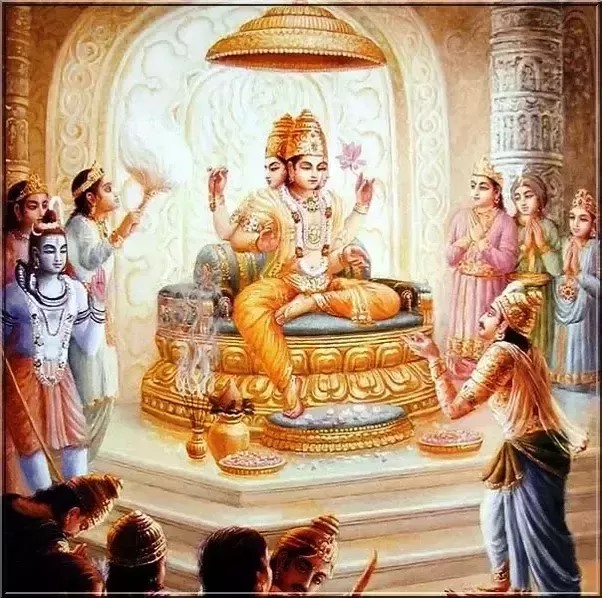 King Raivata, sensing the confusion in the court, started telling his story. “I am Raivata, also known as Kakudmi. I am a great grandson of Manu. I think I reigned over this land centuries ago. My kingdom was known as Anarta, with my capital Kusasthali situated where your city, Dvaraka, stands today. This is my daughter Revati, who is lovely, talented and virtuous. I wanted to find a good husband for my daughter but was unable to find anyone in all of the earth suitable for her. So, I decided to take her to Satyaloka, to see Lord Brahma and seek his advice.
King Raivata, sensing the confusion in the court, started telling his story. “I am Raivata, also known as Kakudmi. I am a great grandson of Manu. I think I reigned over this land centuries ago. My kingdom was known as Anarta, with my capital Kusasthali situated where your city, Dvaraka, stands today. This is my daughter Revati, who is lovely, talented and virtuous. I wanted to find a good husband for my daughter but was unable to find anyone in all of the earth suitable for her. So, I decided to take her to Satyaloka, to see Lord Brahma and seek his advice.
“For her sake, I left my kingdom and set off to Satyaloka with her. When we reached Satyaloka, Brahma was listening to a musical presentation of the Gandharvas, the musicians of the devas. Not wanting to disturb him, we waited until the program was over. When the program ended, I did my pranams to Lord Brahma, told my story and asked my question. I requested him to suggest a suitable groom for Revati.
“He asked me if I knew how much time had elapsed on earth while I waited for the musical performance to finish. Brahma said all the people I knew, including my friends, ministers, servants, wives, kinsmen, armies and treasures had now vanished. Only then did I realize my mistake in waiting for so long. As you know, a minute in Satyaloka is a number of years on earth. I don’t know how many years or yugas have passed. I didn’t know if anyone who is alive at this point might marry my daughter.
“Then Brahma asked me to go back to my own kingdom, where I would find a wielder of the plough, who would be more than worthy of marrying my daughter. So, I have come to my kingdom, or which was once my kingdom to find the wielder of the plough,” Raivata said.
King Ugrasena, said that they knew who the wielder of the plough was. Obviously, everyone knew who the wielder of the plough was, everyone except the wielder of the plough himself. Balarama was still mesmerized, staring at Revati. King Ugrasena, shouted, “Well, Balarama, what do you say?”
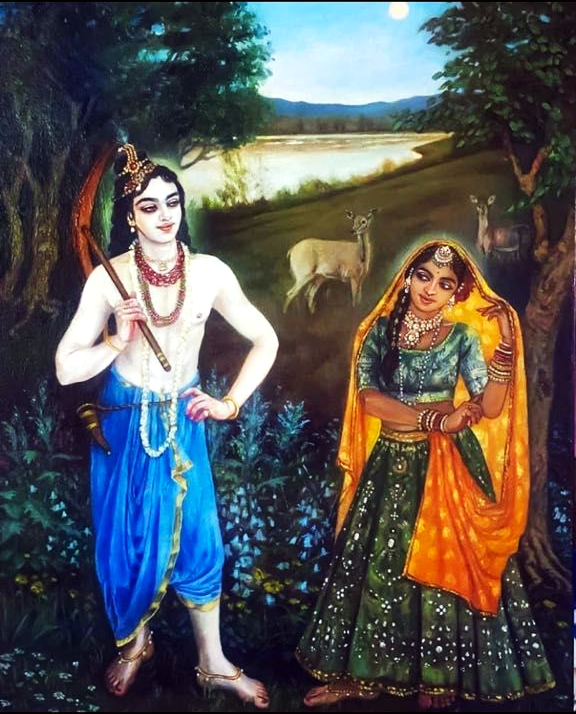 Coming out of his dreamland, Balarama was clueless as to what had happened. Krishna had to pull him aside and tell him what transpired. Balarama now knew why Krishna had such a mischievous look on his face. Balarama was so happy, his face saying it all. He said, “Yes, I will marry Revati.”
Coming out of his dreamland, Balarama was clueless as to what had happened. Krishna had to pull him aside and tell him what transpired. Balarama now knew why Krishna had such a mischievous look on his face. Balarama was so happy, his face saying it all. He said, “Yes, I will marry Revati.”
Both Balarama and Revati were blushing. Balarama then said, “The height is a bit of a problem.” He then instructed Revati to touch his ploughshare with her toe. What a miracle: as soon as Revati touched the ploughshare with her toe, she grew shorter and shorter until she shrunk to Balarama’s size.
Raivata, delighted that he had found the right match for his daughter, shouted “Perfect! This match is perfect!” Later, amidst great rejoicing, on an auspicious day, Balarama and Revati were united in marriage. Revati and Balarama had two sons, Nisatha and Ulmuka, and a daughter named Vatsala, who is also known as Sasirekha.
More to come…
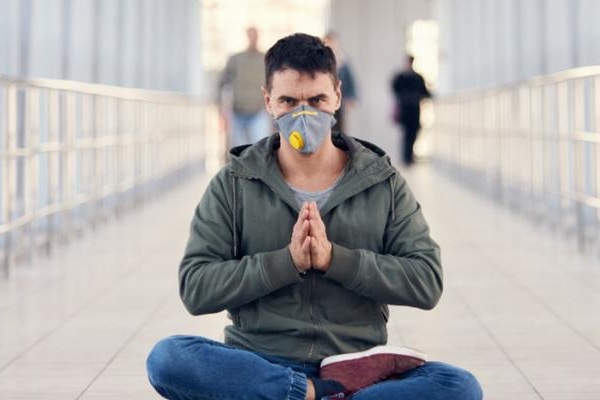 I’m an idealist. In my idea of a perfect world, everyone would be doing yoga and meditation. They’d be healthier and happier than most are now. The virus would have trouble getting a foothold in such an ideal world. But because I’m a realist, I know they haven’t been taking care of themselves. So I work hard to reach them, to help them through the crisis and to motivate them to want more for themselves. I remind everyone, “Do more yoga,” an ideal worth striving for.
I’m an idealist. In my idea of a perfect world, everyone would be doing yoga and meditation. They’d be healthier and happier than most are now. The virus would have trouble getting a foothold in such an ideal world. But because I’m a realist, I know they haven’t been taking care of themselves. So I work hard to reach them, to help them through the crisis and to motivate them to want more for themselves. I remind everyone, “Do more yoga,” an ideal worth striving for.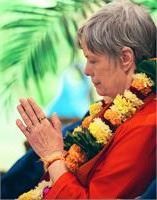 I’m a yogi. I know how to maximize the benefits of simple things. While we’re in an enforced time out, it’s an opportunity for a time of looking inward. I’m building on-ramps to inner peace and the bliss of Consciousness through online courses and social media. Now is the time to help people find what they’re missing — their own Self.
I’m a yogi. I know how to maximize the benefits of simple things. While we’re in an enforced time out, it’s an opportunity for a time of looking inward. I’m building on-ramps to inner peace and the bliss of Consciousness through online courses and social media. Now is the time to help people find what they’re missing — their own Self.